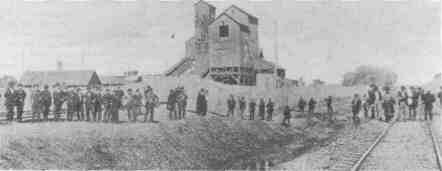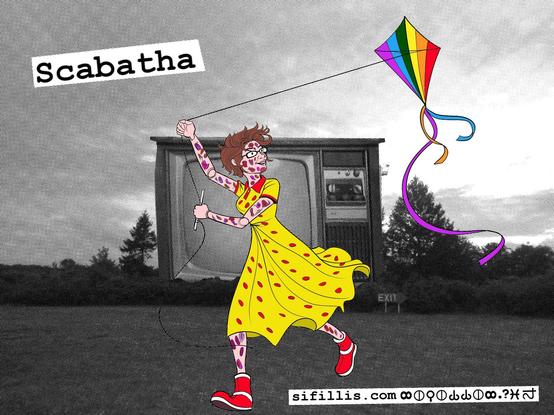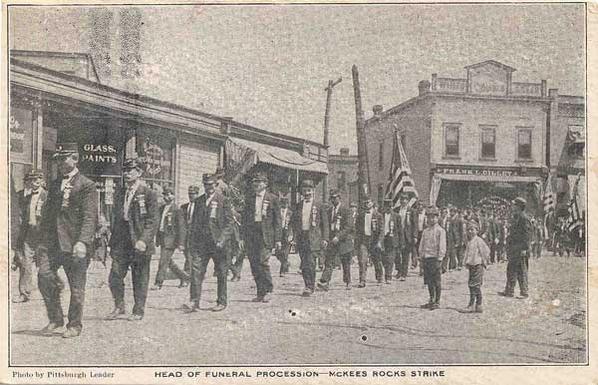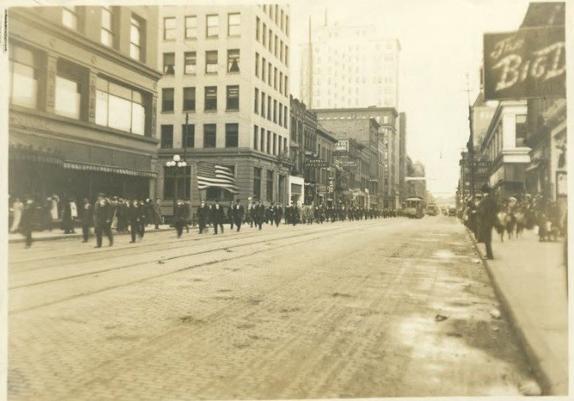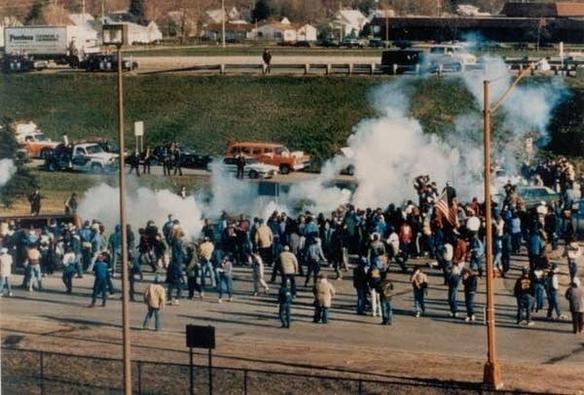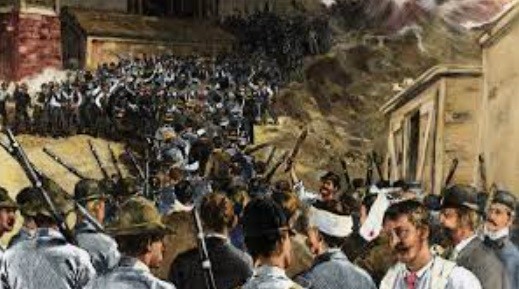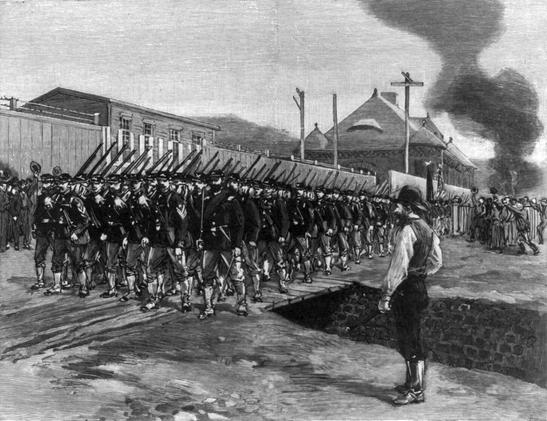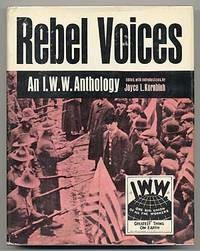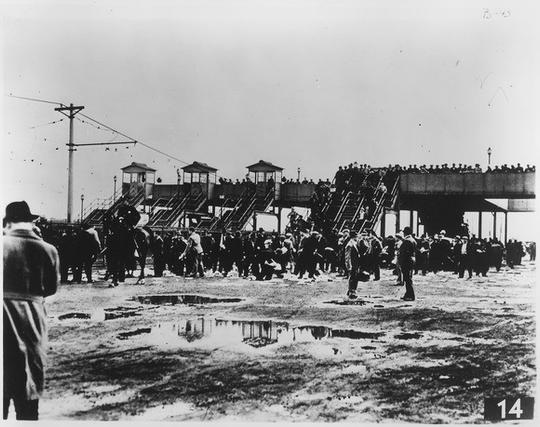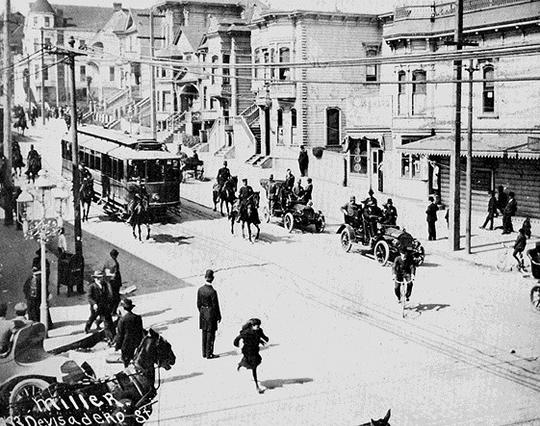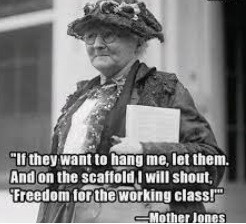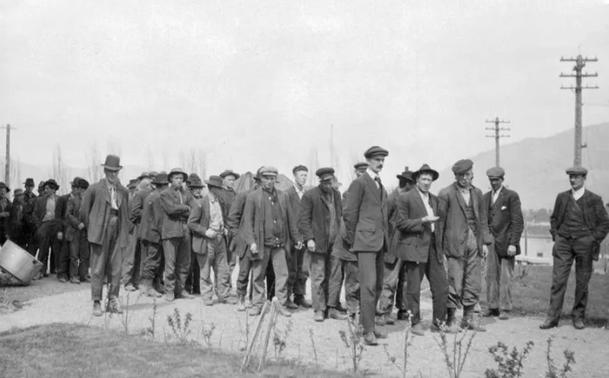Today in Labor History October 12, 1898: A gun battle at the Chicago-Virden Coal Company, in Virden, Illinois, killed 8 coal miners and 5 private detectives, during the Virden Massacre. The Company hired the private cops to protect African-American strikebreakers they had brought in by train to operate their mine during the strike. 30 members of the UMWA were injured, as were several of the strikebreakers. The UMWA told the black miners they would be cared for if they came to the union hall. But the next day, the UMWA told them that their protection would end at 6 pm that evening. After that, Virden became a sundown town and most black miners were expelled. The mayor of Springfield sent the African American workers to East Saint Louis by train and abandoned them there without money, food or warm clothes. The governor then mustered the National Guard to prevent any more black strikebreakers from entering the state, telling his soldiers that if another train tried to enter the state, they should “shoot it to pieces with Gatling guns.” The next month, the mine owners recognized the union and agreed to keep the workers segregated. Virden remained a sundown town for decades after that.
Ever since Bacon’s Rebellion in 1876, the wealthy have been exploiting race to pit workers against each other, provoking mistrust, hatred, and violence. It was common for bosses to bring in African American replacement workers during strikes and lie to them about their employment status, deny that there was a strike going on, promise them equal treatment. Even when strikes were not going on, employers would (and still do) hire workers from different backgrounds, races, genders, ethnicities, ages, at different pay, status and working conditions, in order to divide them and sow mistrust among them. The mine owners of eastern Pennsylvania were infamous for this in the late 1800s. My novel, Anywhere But Schuylkill, shows how they’d hire native whites and English immigrants as the mine bosses and foremen, at the highest pay and status; Welsh and German miners as “skilled” or “contract” miners and engineers, at a middling pay and status; and Irish as Laborers at the lowest pay and status. They’d also hire Welsh workers to moonlight as coal cops, provoking sectarian violence between them and the Irish. And when the workers managed to overcome their mistrust, and unite in solidarity during a strike, the bosses would simply offer the higher status workers a tiny raise and that would often be enough to get them to break solidarity and bust the strike.
But these tactics did not always work. During the Matewan strike in West Virginia, in 1920, union organizers were able to successfully unite Italian immigrants, black workers who had initially been hired as scabs, and local whites, and to maintain solidarity between them, in spite of evictions and attacks by gun thugs. During the Great Upheaval of 1877, a 4-month nationwide labor uprising in which cops and National Guards slaughtered 100 people, black and white workers united in solidarity in Saint Louis, taking over the city in a Commune that lasted for several days. Black longshoremen in Galveston, Texas won a raise, inspiring white workers to join them. In Louisville, Kentucky, black sewer workers initiated a strike wave that quickly included coopers, textile workers, brick makers, cabinet workers and factory workers. Throughout the south, black workers demanded equal pay to whites and, in many cases, won it.
In 1887, the predominantly white Knights of Labor organized and supported black sugarcane workers in New Orleans. However, white paramilitaries attacked the strike, slaughtering up to 50 black workers. The KOL were unique for their time, organizing men, women, immigrants and black workers in one big union. However, even they weren’t immune to racism, xenophobia, and propaganda from the bosses and yellow press. Indeed, they were the primary culprits behind the Rock Springs Massacre of 1883, in Wyoming, where they slaughtered up to 50 immigrant Chinese miners and drove the survivors from town because they believed the Chinese workers were taking their jobs and driving down wages.
In the 1910s, the IWW were famous for organizing workers regardless of race, nationality, religion, gender, or employment status. Ben Fletcher, an African American longshoreman in Philadelphia, was one of the union’s most effective organizers. He successfully united black, native whites, Polish and Irish immigrants, giving the IWW control of nearly every dock in town. They also had considerable success at other ports along the eastern seaboard. The IWW was also instrumental in the multi-ethnic strike against United Fruit, in New Orleans, in 1913. Frank Little, a Cherokee worker, was another of the IWW’s top organizers. He helped organize oil workers, timber workers, and migrant farm workers in California, and helped pioneer many of the passive resistance techniques later used by the Civil Rights movement. He was lynched by vigilantes, during the Anaconda miners’ strike in 1917.
For the sake of space and time, I’m going to limit my discussion to these historical examples from the late 1800s to the 1910s. However, there are many more examples of worker solidarity across race, gender, ethnicity, and sexual orientation, particularly in the mid- to late 20th century.
Read more about the Great Upheaval here: https://michaeldunnauthor.com/2024/03/31/the-great-upheaval/
Read more about the Matewan massacre here: https://michaeldunnauthor.com/2024/04/14/the-battle-of-blair-mountain/
Read more about Ben Fletcher here: https://michaeldunnauthor.com/2021/05/13/ben-fletcher-and-the-iww-dockers/
Read more about Frank Little here https://michaeldunnauthor.com/2024/04/05/frank-little/
You can pick up my novel, ANYWHERE BUT SCHUYLKILL at
https://www.keplers.com/
https://www.greenapplebooks.com/
https://www.historiumpress.com/michael-dunn
Or send me $25 via Venmo (@Michael-Dunn-565) and your mailing address, and I will send you a signed copy!
#workingclass #LaborHistory #virden #massacre #illinois #coal #mining #strike #union #scabs #racism #police #PoliceBrutality #IWW
